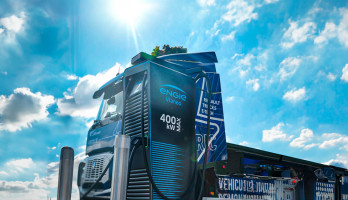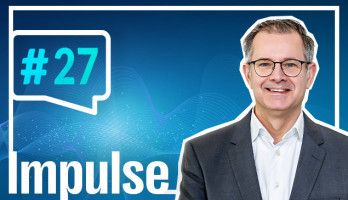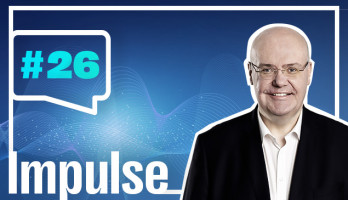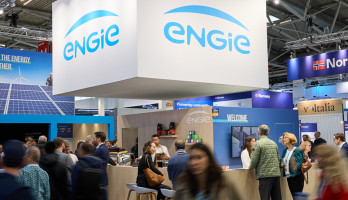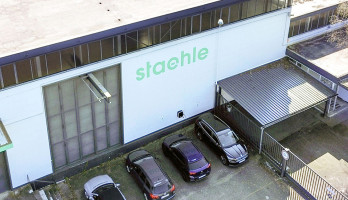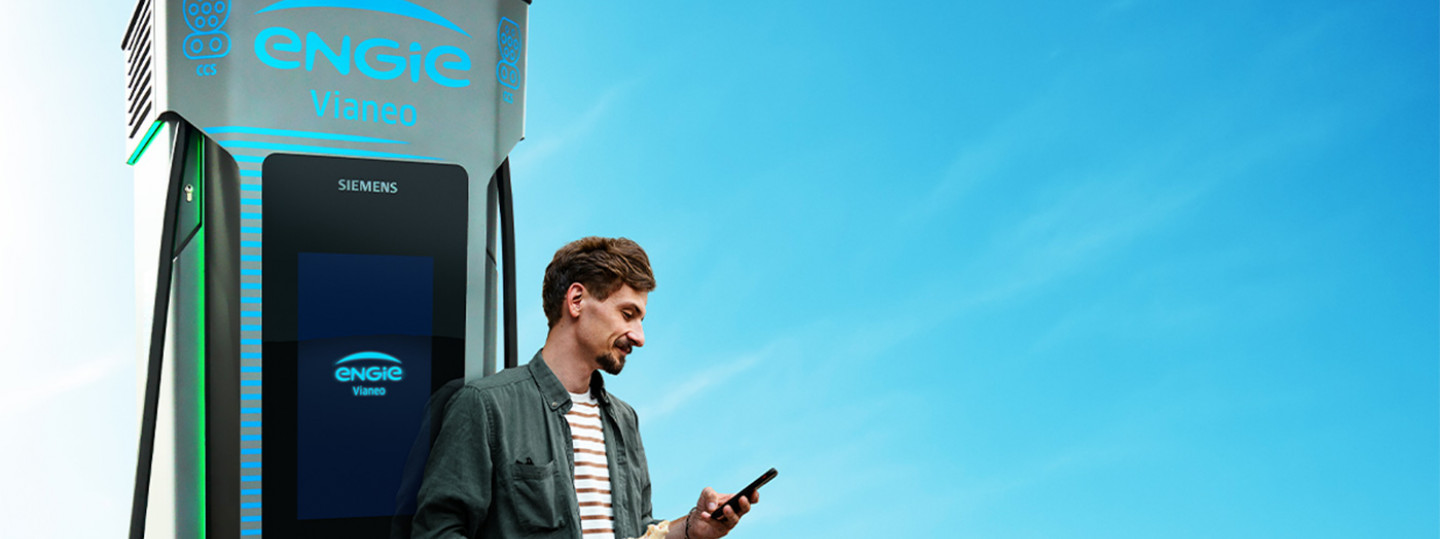
E-mobility in truck transport: How charging infrastructure is driving the transport transition in the heavy-duty sector
Road freight transport is a key lever for achieving climate targets. The electrification of truck transport in particular is seen as a beacon of hope for the decarbonization of the transport sector and the entire mobility transition. However, its success depends on the right charging infrastructure. Without reliable and comprehensive charging points, the transformation will remain theoretical.
E-mobility for trucks: More than just a power connection
Unlike passenger cars, e-mobility for trucks has significantly higher requirements: in addition to lower charging capacities for overnight charging, fast charging capacities of over 350 kW are necessary to keep downtimes in everyday operations to a minimum. At the same time, charging parks must offer sufficient space for large vehicles, including wide access roads, maneuverable areas, and easy integration into logistics processes. One thing is crucial here: predictability. Trucks only make money when they run reliably. Flexibility, as in the passenger car sector, is hardly a given here.
What´s more, the total cost of ownership (TCO) is absolutely crucial for logistics companies, as the industry is extremely cost-sensitive. Although e-trucks are currently still more expensive to purchase (around twice the price of a diesel truck) on a life-cycle basis, they are significantly cheaper to operate. This is due to lower energy costs (electricity instead of diesel), lower maintenance costs, and regulatory advantages, particularly with regard to tolls, which are currently still completely exempt until 2025 with a possible extension until 2031 (if the exemption is limited to 2025, a 25% discount will be granted thereafter).
E-charging infrastructure for trucks: A patchwork quilt in Europe
There is still a lack of comprehensive public infrastructure. Across Europe, the picture is uncoordinated: some countries are further ahead with expansion, while others are lagging behind. The result is a patchwork quilt that makes cross-border transport difficult. The new EU AFIR regulation sets an important framework: in future, fast charging points should be available every 60 kilometers along the trans-European transport network (TEN-T). National programs such as the "Deutschlandnetz Lkw" (Germany Truck Network) are a step in the right direction, but they are far from sufficient to cope with the large-scale ramp-up of electric truck mobility.
What good e-charging infrastructure for trucks must deliver
Charging infrastructure for heavy-duty transport must meet several requirements at the same time:
- Availability and reliability: Failures are unacceptable in everyday logistics.
- Charging speed: High charging capacities must be guaranteed in order to meet time slots.
- Integration into logistics processes: Loading times and locations must be plannable and reservable.
- Price transparency: The industry demands simple, comprehensible price structures instead of a jungle of tariffs.
- User focus: Drivers need intuitive apps, clear processes, and offers in their own language.
- Cost-effectiveness: Ultimately, the overall cost calculation must be superior to other technologies.
Only when these factors work together can e-mobility in the truck sector be a success, both economically and ecologically.
"We are designing e-charging infrastructure for trucks from the outset from the perspective of freight forwarders."
What might such an approach look like in concrete terms? What do freight forwarders and drivers expect—and what is important when it comes to planning, pricing, and Europe-wide expansion?
ENGIE Vianeo is now launching in Germany. What is your focus when it comes to expanding the e-charging infrastructure specifically for heavy-duty transport?
Jan-Niklas Ellerich: Our focus is clearly on the so-called TEN-T corridors, i.e. Europe's central transport axes. It is important for us to think in terms of European corridors. At ENGIE Vianeo, we don't just want to build charging infrastructure in Germany, we want to be active beyond national borders.
Our goal is to offer freight forwarders a comprehensive charging infrastructure along relevant routes in Europe, ideally from a single source. This will enable transport companies to plan and handle their entire freight logistics efficiently across Europe.
Of course, we will not be present in all European countries from the outset. Our initial focus is on France, Belgium, Germany, and Spain. From there, we plan to expand gradually into other countries. That is the starting point and also the core of our current strategy.
How does ENGIE Vianeo's offering differ from other providers on the market, especially with regard to trucks?
Jan-Niklas Ellerich: A key distinguishing feature is that we have consistently geared our charging infrastructure to the requirements of heavy-duty transport from the outset. Many competitors use existing car charging stations and try to repurpose them for trucks. In our view, this is not the best approach for users.
We design the charging infrastructure for trucks from the ground up from the perspective of freight carriers and dispatchers, focusing on the actual needs of the logistics industry. This includes sufficient space, suitable interfaces, intuitive orientation, suitable locations, and additional requirements such as reservation options or video surveillance for greater security. Our facilities are designed explicitly for trucks from A to Z.
Another key factor that sets us apart is our expertise as an energy supplier. We have extensive knowledge of the energy market, particularly in energy management, i.e., the forward-looking procurement and efficient use of energy. We are convinced that, in the end, those providers who can offer a competitive and stable price structure will be successful in the market. Our energy expertise gives us a clear advantage here.
In addition, we think European, along the important transport axes and logistics corridors. This combination of truck focus, energy expertise, and international orientation makes our offering unique.
What feedback do you receive from freight forwarders and drivers—what are their biggest concerns or wishes?
Jan-Niklas Ellerich: One of the biggest concerns is the volatility of electricity prices. Unlike diesel, which can simply be refueled and stored, electricity cannot be stored in the grid. This poses fundamental challenges. In addition, many players are operating in a market that is completely new to them. The electricity market works differently from the familiar diesel sector, where freight forwarders have been operating safely for decades. This unfamiliarity understandably causes uncertainty.
A frequently expressed wish is therefore that operation should be as similar as possible to diesel—especially in terms of cost structure. Many companies work with so-called diesel floaters, where fuel costs are automatically adjusted to market prices and treated as transitory items. A comparable solution is also repeatedly requested in the electricity sector, with the aim of creating as much predictability and as little administrative effort as possible.
Because at the end of the day, one thing counts: the truck has to run reliably. The vehicles only make money when they are running. That is why reliability and predictability are top priorities for our customers.
And despite all the challenges, there is also genuine enthusiasm, especially among drivers. They appreciate the significantly quieter ride, better acceleration, and noticeably lower vibrations. Many don't want to go back to diesel after making the switch. Shipping companies also see advantages: they can save money in the long term. This positive feedback and the enthusiasm among drivers and companies are a very important motivator for us.
How does ENGIE Vianeo ensure price transparency and user-friendliness?
Jan-Niklas Ellerich: Price transparency is a key issue for us, and we believe that we are already relatively far ahead in this area in the market. At the request of the industry, we rely on familiar and proven mechanisms: For example, we are currently installing so-called price totems at our locations in France. These clearly display the current charging prices, not only in the app or directly at the charging station, but also in a clearly visible location at the entrance to the site, similar to what you see at traditional gas stations.
In addition to price transparency, user-friendliness is also a decisive factor. Here, we rely on digital processes, intuitive apps, and clear communication. One particularly important aspect is the option to make reservations: users can book their charging spot in advance, giving them the certainty that it will actually be available when they arrive. This reduces uncertainty and avoids unnecessary waiting times: a real added value in the stressful everyday life of logistics.
We also value multilingualism. Our systems and interfaces are designed to cover as many native languages as possible to make access as easy as possible for international drivers.
This combination of a transparent pricing structure, digital planning, and linguistic accessibility forms the foundation of our strategy for transparency and user-friendliness.
Conclusion: E-mobility in truck transport requires systematic infrastructure
The transformation of freight transport toward e-mobility is no longer a topic for the future. It has long since begun. However, the increased use of battery-electric trucks will only be successful if the charging infrastructure grows at the same pace.
The example of ENGIE Vianeo shows that anyone who wants to develop charging infrastructure specifically for heavy-duty transport rather than simply adapting existing infrastructure must bring together the perspectives of freight forwarders, drivers, and energy experts. The requirements for e-charging infrastructure for trucks are complex, ranging from fast charging performance and logistics integration to pricing models and user-friendliness.
For e-mobility to become a driver of the transport transition in truck traffic, one thing is needed above all else, in addition to the political framework and technological progress: well-thought-out solutions for real transport needs.
Our Expert



